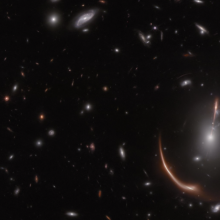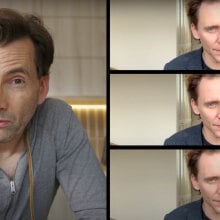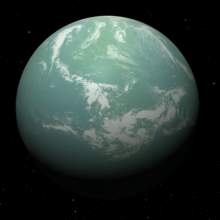A star nursery discovered over 250 years ago will teach astronomers new things about how stars come to life with the help of the piercing vision of the James Webb Space Telescope.
The powerful new $10 billion observatory, located in deep space about 1 million miles from Earth, took a new image of a star-forming region within the Carina Nebula. The picture captures exceptional details that previously eluded the Hubble Space Telescope.
The Carina Nebula has been a popular target to study through the years because it demonstrates a cosmic event that lasts for an extremely brief time — only about 50,000 to 100,000 years. The nebula lies in the Milky Way about 7,600 light-years away and is home to other notable cosmic objects, such as the Keyhole Nebula and the unstable supergiant star, Eta Carinae. Astronomers have given its features some pet names, too, like Mystic Mountain and Cosmic Cliffs.
The new Webb photo (seen at the top of this page) clears away the cobwebs of gas and dust to show hundreds of never-before-seen stars in the region, with bubbles, cavities, and jets blowing out from more baby stars. The telescope's ability to penetrate the dust screen is so strong, it is even able to catch the light of galaxies lurking far beyond the region, said Amber Straughn, deputy project scientist for Webb, during a NASA presentation on Tuesday.
"Every dot of light we see here is an individual star, not unlike our sun, and many of these likely also have planets," she said.


Called the Cosmic Cliffs, the area captured looks like an arid desert landscape, with rusty rolling mountains and canyons sprawling beneath a starry sky. Enormous pillars loom over a glowing wall of gas, and radiation and space weather from newborn stars blow out bubbles. An eruption at the top of the ridgeline purges more gas and dust.
These features reside in the heart of a gaseous cavity, researchers say. But a cosmic tug-o-war through the interactions of gases and debris can ensue. Webb's study of the Carina Nebula and other nurseries may help researchers solve the age-old mystery of how gas and dust — the raw materials for stars and planets — could also work to prevent new births.
"There's a flip side of the story," Straughn said. "These same processes can serve to sort of erode away this material and stop star formation."



Webb, a collaboration of NASA, the European Space Agency, and the Canadian Space Agency, will observe some of the oldest, faintest light in the universe. Astronomers anticipate Webb will spark a golden age in our understanding of space. The new Carina Nebula photo was among the first full-color images released publicly on July 12, marking the beginning of scientific operations for the observatory.
Scientists have called out some of the prominent details Webb has revealed in the new photo, like an odd arch bending out of the region. Vapor appears to rise from the celestial “mountains” — searing gas and dust ejecting from the star nursery because of ultraviolet radiation.
"We see examples of structures that, honestly, we don't even know what they are, like what's going on here?" Straughn said, pointing out an element in the image. "The data is just so rich."
Topics NASA





























